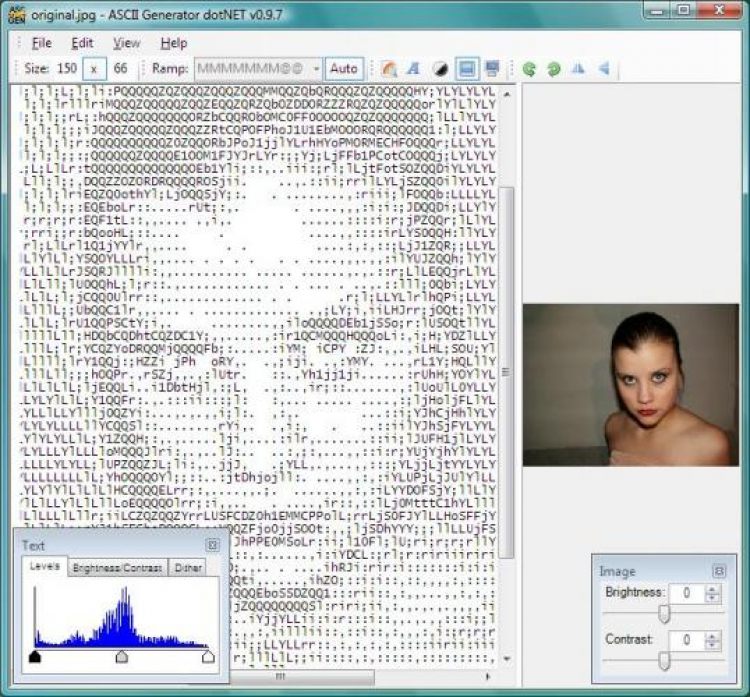Imagetotxt.io: A Game-Changer for Image-to-Text Conversion
페이지 정보
작성자 ogicuvefo 작성일24-07-22 22:36 조회39회 댓글0건관련링크
본문
In today’s digital age, the ability to turn visual elements into written format has become increasingly vital. It's not just about decoding symbols or understanding patterns. Imagine having a tool that allows you to seamlessly convert graphical representations into readable, editable text. This capability opens doors to numerous applications, from enhancing accessibility to streamlining content creation.
Whether you're dealing with scanned documents, photographs with text, or any form of visual data, the process can be transformative. Picture this: what if you could instantly extract information from a picture and have it in a text format that you can easily manipulate? The implications are vast, affecting everything from data entry to research.
Advances in technology have made this process more accessible than ever. With just a few clicks, sophisticated software can analyze the visual data and render it into a text format that is both accurate and editable. This is not merely a convenience; it’s a game-changer in how we interact with and utilize visual information.
In essence, the ability to shift from graphical to textual representation is a testament to the progress in digital tools. It’s about transforming how we perceive and work with data, making it more versatile and accessible. By leveraging these technologies, we can revolutionize our approach to handling visual information, paving the way for more efficient and innovative solutions.
Key Techniques and Tools Available
In today's world, transforming visual content into readable information is essential. Numerous methods and instruments are available for this purpose. Each one offers unique capabilities and features. Understanding these tools can greatly enhance the efficiency of processing visual materials.
Some of the primary methods involve optical recognition technologies. These systems analyze and interpret visual elements, converting them into editable formats. These technologies vary in complexity and application, from simple recognition software to advanced machine learning algorithms. With the rise of digital solutions, new tools continually emerge, each bringing improvements and innovations to the process.
Among the available tools, there are standalone applications designed for specific tasks. Others integrate seamlessly with existing platforms, providing added convenience and flexibility. The variety of choices ensures that there is a solution suited to every need, whether for professional or personal use.
Choosing the right tool depends on various factors, such as the complexity of the content and the required accuracy. Some tools offer basic functionality, while others provide advanced features and customization options. For those looking to achieve high precision, investing in more sophisticated options might be necessary.
With ongoing advancements, it's crucial to stay updated on the latest developments. The field is constantly evolving, offering new solutions and improvements regularly. As technology progresses, these tools become more effective and user-friendly, making the task of processing visual information more accessible and efficient.
Applications and Benefits of Text Extraction
Harnessing the power of transforming visual content into readable data opens up a world of possibilities. This process is not just about recognition; it’s about unlocking valuable insights and enhancing efficiency. Imagine capturing information from documents or photos effortlessly. This technique bridges the gap between analog and digital, making data handling seamless.
Applications are vast and varied. In the business realm, it enables effortless digitization of records. Healthcare professionals benefit immensely, as patient records can be easily updated and accessed. Educational institutions leverage this technology to convert handwritten notes into searchable content. The technology is even employed in legal and archival sectors for organizing large volumes of documents.
Moreover, the benefits extend beyond simple data collection. By automating the extraction process, organizations reduce manual entry errors and speed up workflows. Efficiency is significantly enhanced, as valuable information is quickly retrievable and actionable. This not only saves time but also improves accuracy and accessibility.
For instance, consider how historical archives are maintained. What once took hours of manual sorting now happens in seconds. Such advancements are transforming industries by making data more accessible and useful. The impact is profound and widespread.
As technology advances, so does its integration into everyday tasks. From personal use to large-scale enterprise applications, the advantages are clear. Efficiency, accuracy, and ease of access are just the beginning of what this technology offers.
Real-World Uses and Advantages
In today's fast-paced world, the ability to translate visual data into editable formats has become increasingly valuable. The process enables users to extract valuable content from various sources, streamlining workflows and enhancing productivity. Imagine transforming a page of handwritten notes or a printed document into digital content without the need for manual typing. This technology opens up new possibilities, particularly in sectors that rely heavily on document management and information retrieval.
For businesses, this method can significantly reduce operational costs. It eliminates the need for manual data entry, which is both time-consuming and prone to errors. Moreover, it facilitates easier storage and retrieval of important documents. For instance, academic researchers and legal professionals often deal with large volumes of printed materials that require quick digitization. This method provides a practical solution, ensuring that critical information is readily accessible and organized.
Additionally, individuals with disabilities or those who struggle with traditional reading methods find this technology incredibly beneficial. By transforming printed content into a format that can be read aloud by screen readers or other assistive technologies, it democratizes access to information. The impact on accessibility is profound, making written content more inclusive for everyone.
In summary, the ability to transcribe visual data into a digital format enhances efficiency, reduces errors, and provides accessibility. For those interested in exploring this technology further, convert image to text offers a practical and user-friendly solution.

댓글목록
등록된 댓글이 없습니다.


